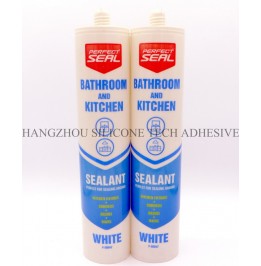Effective Team Coordination Strategies for Large-Scale Sealant Application Projects
Applying sealant over expansive surfaces, such as commercial building facades, industrial floors, or large-scale waterproofing projects, demands precise coordination among multiple workers. Poor teamwork can lead to uneven application, wasted materials, or structural vulnerabilities. Below are structured methods to streamline workflows, enhance communication, and ensure consistent results.

Clear role assignments prevent overlaps and ensure every task is addressed efficiently during large-scale sealant projects.
Preparation Team Duties:
Assign workers to clean and prep surfaces, including removing old sealant, sanding rough edges, and masking adjacent areas. This group ensures the substrate is ready for application, reducing delays for the main crew.
Application Specialists:
Designate skilled workers to handle sealant dispensing, tooling, and smoothing. These individuals should have experience with caulking guns, trowels, or automated application tools to maintain uniform bead thickness.
Quality Control Inspectors:
Station inspectors to monitor application in real time, checking for gaps, air bubbles, or uneven lines. Early detection of errors allows immediate corrections, avoiding costly rework later.
Logistics and Material Handlers:
Coordinate a team to transport sealant tubes, solvents, and tools to workstations. This group should restock supplies proactively to prevent interruptions during high-volume tasks.
Effective communication minimizes missteps and ensures all team members align with project goals.
Pre-Job Briefings:
Hold daily meetings to outline tasks, safety protocols, and timelines. Use visual aids like diagrams or marked zones to clarify responsibilities for each crew.
Hand Signals and Verbal Cues:
In noisy environments, establish non-verbal signals (e.g., raised hands for “stop” or thumbs-up for “continue”) to convey instructions quickly. Pair this with concise verbal commands for clarity.
Radio or Mobile Communication:
Equip supervisors with two-way radios or group messaging apps to relay updates about material shortages, equipment issues, or schedule changes. Avoid overcrowding channels by assigning specific frequencies or threads per task.
Progress Tracking Systems:
Use shared digital checklists or whiteboards to mark completed sections. This transparency helps workers identify which areas need attention and prevents duplication of effort.
Strategic organization of workspaces and equipment reduces downtime and physical strain during extended projects.
Zoned Work Areas:
Divide the site into sections, assigning each team to a specific zone. This prevents congestion and ensures workers focus on contiguous areas without unnecessary travel.
Centralized Tool Stations:
Set up mobile carts or stations stocked with caulking guns, scrapers, and solvents near work zones. Rotate these stations as teams progress to keep tools within easy reach.
Ergonomic Practices for Large Surfaces:
For vertical or overhead applications, use ladders, scaffolding, or lifts with adjustable heights. Rotate tasks among workers to reduce fatigue from repetitive motions like squeezing triggers or kneeling.
Waste Management Systems:
Place designated bins for empty sealant tubes, rags, and debris near work areas. Regular disposal prevents clutter and tripping hazards, maintaining a safe environment.
Large-scale projects often encounter unpredictable conditions. Flexible strategies help teams adjust without compromising quality.
Weather Contingency Plans:
Monitor forecasts and reschedule outdoor work during rain or extreme temperatures. For indoor projects, control humidity with dehumidifiers to ensure proper sealant curing.
Surface Variability Adjustments:
If the substrate has uneven textures or joints of differing widths, train workers to adjust nozzle sizes or application pressure dynamically. Inspectors should flag irregularities for real-time fixes.
Cross-Training for Versatility:
Encourage workers to learn multiple roles (e.g., prepping, applying, or inspecting). This flexibility allows teams to redistribute tasks if a member is unavailable or a bottleneck arises.
By implementing these coordination strategies, large-scale sealant projects achieve higher efficiency, reduced waste, and consistent quality. Regular reviews of workflows and open communication channels further refine team performance over time.
Copyright 2019 by Hangzhou Silicone Tech Adhesive Co., Ltd. All rights reserved.
Bathroom Sealant | Acrylic Sealant | Dow Corning 795 | Aquarium Sealant | Dow Corning 732 | Clear Silicone Sealant | Polysulfide Sealant | Glazing Sealant | Mirror Sealant | IG Sealant
Powered by Onepound